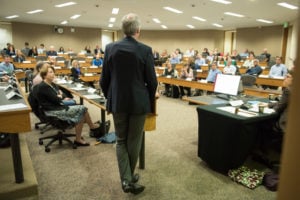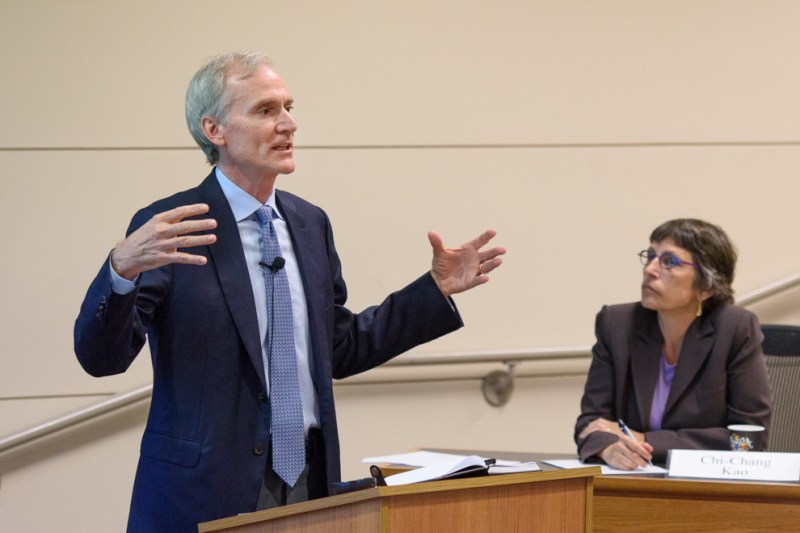At the 49th Faculty Senate’s second meeting last night, President Marc Tessier-Lavigne presented his vision for Stanford from his inaugural address and sought feedback from faculty. The Dean of Research Ann Arvin also gave a report on addressing the challenges of workload and integrity in faculty research.
President’s areas of focus
Tessier-Lavigne prefaced the summary of his inaugural address by stating his commitment to collectively designing a vision for Stanford with the rest of the faculty.

He emphasized the importance and challenges of promoting a liberal arts education and maintaining diverse interests within the student body. Promoting this message will also have a positive impact on the resilience of the school in the future, Tessier-Lavigne suggested.
“The fields that are popular today are not the fields that were popular 20 to 30 years ago and may not be the ones that are popular 20 or 30 years from now,” Tessier-Lavigne said. “If we allow our university to focus in on certain areas, we may be today’s university, but we may not be tomorrow’s university.”
According to Tessier-Lavigne, the WAYS requirements have been successful in promoting a liberal education and encouraging students to explore multiple interests. However, he proposed that more needed to be done to increase the flexibility of curriculum to allow students with two or more fields of interest to experience them in meaningful ways.
There are “forces,” according to Tessier-Lavigne, that drive students to favor certain majors over others. He emphasized the need to share “with our students what we know to be true: Any Stanford degree can help enable a successful life.”
Stanford has always been a leader in generating and applying new knowledge, according to Tessier-Lavigne. However, he believes that Stanford needs to go further in understanding the impact of research.
“Given our gifts and given our strengths, it behooves us not just to affect change, but also to understand and help manage change in the world by evaluating and anticipating the moral, legal and societal dimensions of research,” he said.
Tessier-Lavigne spoke to the importance of maintaining a culture of free and open exchange of ideas and diversity and inclusion because “we all benefit from a diversity of opinions.” He called for increasing representation of women and minorities on the faculty.
Tessier-Lavigne also addressed themes regarding the community that he was not able to mention in his inaugural speech, including the initiative to engage with local, national and international communities “beyond our walls.”
Report from Dean of Research
Ann Arvin, Dean of Research and professor of pediatrics, microbiology and immunology, focused her report on the burden on faculty to secure federal funding and integrity in research.
A faculty research workload study done by the Federal Demonstration Partnership in 2012 found that faculty spend only 52 percent of their time doing research, with the other 42 percent spent on administrative tasks including grant proposals, reporting, financial management, personnel evaluations and regulation compliance.
“No one is saying that we aren’t obligated and that we don’t want to do all of the necessary tasks that will protect the animals, the human subjects and the rest of us in the research that we do,” Arvin said. “But we do have to recognize [looking for funding] as a source of the burden.”
Arvin outlined several ways Stanford is addressing the faculty burden: Direct support from the university budget; enhancing competitiveness for research grants through seed grants, shared research facilities, interdisciplinary research and the SLAC National Accelerator Library; a culture of collaboration; advocating for policy changes; creativity and adaptability of faculty in their research.
Arvin also reviewed the importance of Stanford’s research integrity, especially within the context of the faculty burden.
“The question that people are asking is whether those challenges … to maintain a research program in this environment may be underlining or at least distracting us from the principles concerning research and research integrity that we want to maintain,” Arvin said.
Contact Tia Schwab at kbschwab ‘at’ stanford.edu.
